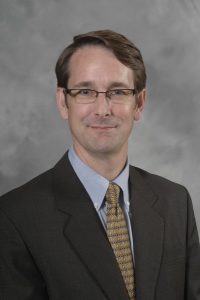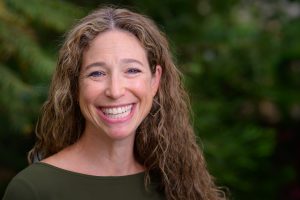Faculty from Michigan State University will join forces and combine wildlife trafficking and supply chain management expertise to reduce global crime with far-reaching impacts.
The team will combine supply chain and conservation datasets, comb through logistical networks, leverage local partnerships and use advanced analytics to predict and respond to weaknesses in illegally trafficked wildlife supply chains.

Stanley Griffis, John H. McConnell Professor of Business Administration and professor of logistics in the Department of Supply Chain Management
The three-year research endeavor is led by MSU faculty members Meredith Gore, associate professor in the Department of Fisheries and Wildlife, and Stanley Griffis, John H. McConnell Professor of Business Administration and professor of logistics, along with operations engineering and computer science experts from the University of Southern California, the University of Alabama, Colorado State University and Harvard University.
“This kind of interdisciplinary research brings together experts across multiple fields whose areas of study might be completely unrelated — but together, we are working to solve a global problem,” Griffis said.
Together, the researchers are combining principles from their respective fields and creating new knowledge for on-the-ground partners — mostly stakeholders working in central African megacities — to use in their efforts to disrupt illegal supply chains.
The team’s research, supported by the National Science Foundation’s Division of Operations Engineering, will build new understanding about how illegal goods are moved and shipped throughout the African continent and across the world.
“Wildlife trafficking is less understood than drug, small arms or human trafficking, but the illicit networks often share a number of the same supply chain characteristics,” Griffis said. “If we can help develop tools to start interfering with wildlife trafficking, we may be able to influence other transnational crimes, as well as more effectively hinder global crime networks and corrupt non-state actors.”
Wildlife trafficking is a $23 billion-per-year industry and harms species, ecosystems and humans around the globe.
Gore explained that wildlife trafficking has increased as Africa, along with the rest of the world, has urbanized and globalized. Many people, she said, want to continue consuming the foods that they did when they lived in rural areas, which includes some endangered species. Trafficking these protected species — whether for food or luxury items — is illegal, thus creating what’s called an “illicit” or “dark” supply chain.
Over the past two years, Gore spent time in the Democratic Republic of Congo and Republic of the Congo, enhancing relationships with local communities and agencies, gathering data, mapping specific trade routes and learning how certain goods — illegal and legal — move along their respective supply chains.

Meredith Gore, conservationist and associate professor in MSU’s Department of Fisheries and Wildlife
“This has been an iterative and collaborative process. Our research team and partners targeted questions about shipping and logistics for certain goods across the continent,” Gore said. “Being on the ground, I can use traditional social science methods to measure variables that the interdisciplinary team can later analyze using innovative and interdisciplinary models.”
Understanding how certain legal agricultural goods — like cocoa or manioc — are shipped reveals key insights to potential trafficking routes for illegal commodities, she explained.
“Stan and the rest of the team are helping me understand how to use supply chain management principles to measure existing agricultural supply chains. Then we can understand how other illicit shipments converge with lawful supply chains, as well as connections to illegal ones,” Gore said. “From a scientific perspective, it’s fascinating learning the form and function of these illicit networks.”
Griffis explained that once the researchers understand how these networks operate from a supply chain perspective, they can start to understand how the offenders at various points in the illicit networks make decisions and how they run their businesses.
“It’s a terrible business, but at the end of the day, traffickers are managing a supply chain in ways that are not unlike how legitimate supply chains are managed,” Griffis said. “The team will take what we learn from Meredith and local partners, then apply theories and knowledge of supply chains to walk the problem backwards to understand similarities and differences in wildlife trafficking.”
Griffis explained that learning from Gore how wildlife is trafficked leads the team to explore more targeted areas.
“Details — such as whether the wildlife is alive or dead when shipped — completely change a supply network because the logistics involved might require things like refrigeration for some trafficked species but not others,” Griffis said. “That changes the network you might select to move that species through. These seem like small distinctions, but they’re critical to addressing the problem. Now we’re getting this kind of data, we can really dig in and start in-depth analysis.”
Gore explained that, through their seemingly unlikely partnership, there will be research-backed recommendations to increase efforts focused on reducing global crime.
“Investing in a cross-disciplinary team is giving us knowledge and understanding that we wouldn’t have otherwise,” Gore said. “Together, we’re working to apply collective research for a good purpose.”





